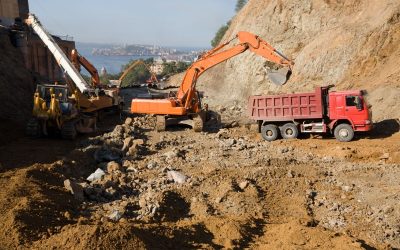This technology is appropriate in metropolitan environments, where traditional excavation can be costly and environmentally destructive. By leveraging innovative technology and equipment, HDD enables the construction of pipes, cables, and other utilities in a manner that minimizes environmental disruption.
Understanding the Process of Horizontal Directional Drilling
The process of installing subsurface utilities includes numerous essential stages that assure efficiency and precision. It starts with drilling a small pilot hole from a launch point to a predetermined exit location. This initial phase is critical because it determines the exact path for the utility line and reduces the danger of disrupting existing infrastructure or subsurface utilities. This is normally accomplished with a reamer, a specialized tool that enlarges the hole to the appropriate diameter. The drilling fluid, often a mixture of water and bentonite clay, cools the drill bit, stabilizes the hole, and reduces friction during this phase. The final step in the operation is to pull the utility through the expanded hole. A temporary pulling head is attached to the utility, and a winch is used to pull it into position. This technology provides for a more seamless installation of utilities, decreasing the requirement for surface disruption and repair.
Benefits of Horizontal Directional Drilling
One of the main advantages of horizontal directional drilling is its low environmental impact. Traditional trenching methods can cause significant damage to landscapes, roadways, and existing utilities. HDD, on the other hand, enables accurate installation without damaging the surface. It is especially crucial in delicate environments like marshes or places with dense vegetation. HDD is a more cost-effective option in many circumstances. While the initial setup costs may be higher than traditional approaches, the savings from less restoration work and traffic disruptions can easily exceed these expenses. HDD may typically be done in a quicker timeframe, helping projects to keep on track and within budget. It is suitable for installing water and sewer lines, gas pipelines, telephone cables, and even electric power lines. This versatility is appropriate for governments and utility corporations looking for efficient ways to expand their networks.
Applications and Future Prospects
As the demand for underground infrastructure increases, so does the utilization of this novel drilling technique. It is increasingly being used in urban development projects because it successfully tackles the limits caused by dense people and existing infrastructure. Furthermore, as cities expand, there is a greater need for innovative ways to handle new utilities while maintaining the urban landscape’s integrity. As drilling technology advances, its capabilities are projected to improve. Improvements in tracking systems, automated drilling rigs, and more effective drilling fluids will all help to increase installation precision and efficiency. As these technologies advance, HDD will likely become even more valuable in the planning and execution of infrastructure projects. Its ability to reduce surface disruption while enabling various applications makes it an excellent choice for utility companies and municipalities. As the demand for sustainable infrastructure solutions grows, HDD will unquestionably remain at the forefront of novel construction approaches.








